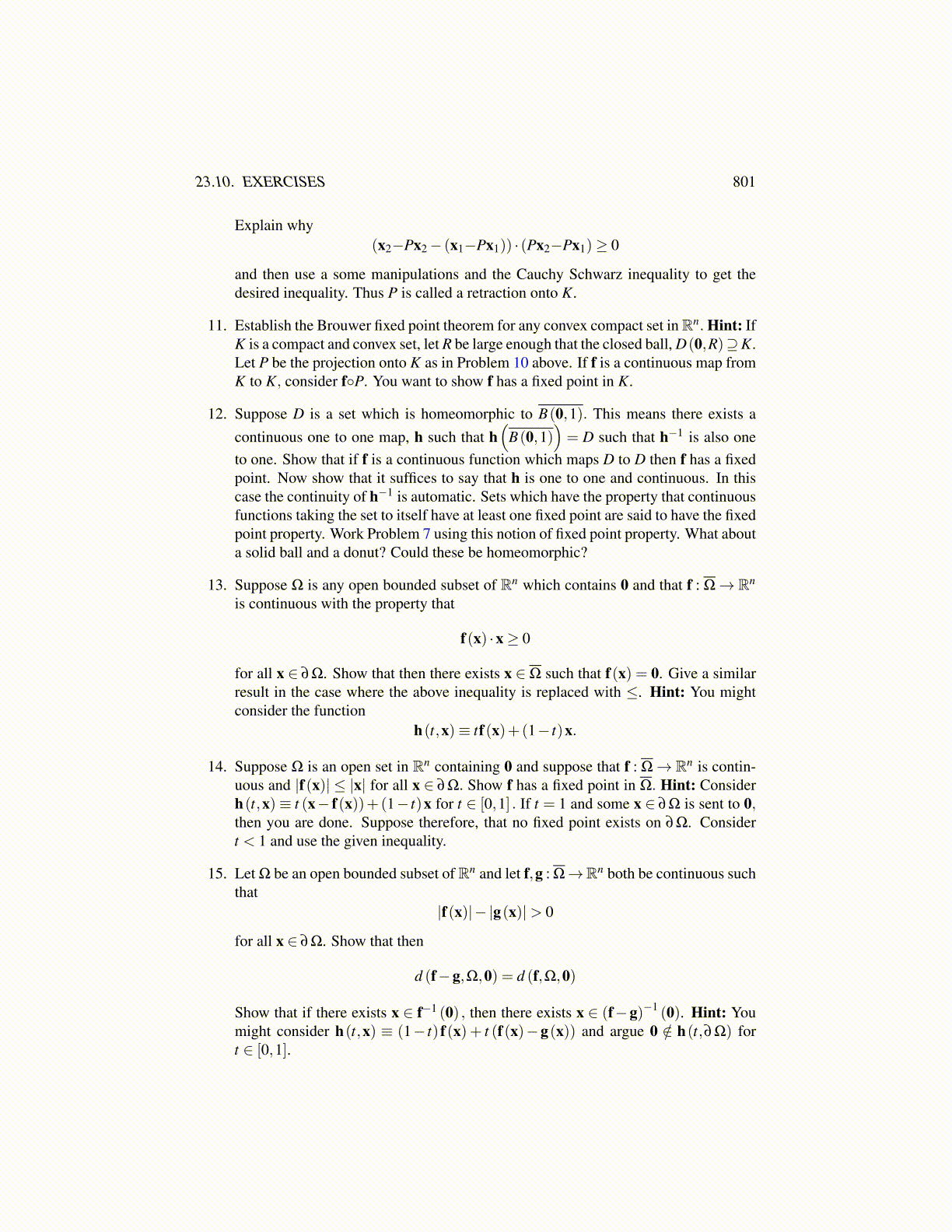
23.10. EXERCISES 801
10. In Problem 9 show that Px satisfies the following variational inequality.
(x−Px) · (y−Px)≤ 0
for all y ∈ K. Then show that |Px1−Px2| ≤ |x1−x2|. Hint: For the first part notethat if y ∈ K, the function t→ |x−(Px+ t (y−Px))|2 achieves its minimum on [0,1]at t = 0. For the second part,
(x1−Px1) · (Px2−Px1)≤ 0, (x2−Px2) · (Px1−Px2)≤ 0.
Explain why(x2−Px2− (x1−Px1)) · (Px2−Px1)≥ 0
and then use a some manipulations and the Cauchy Schwarz inequality to get thedesired inequality. Thus P is called a retraction onto K.
11. Establish the Brouwer fixed point theorem for any convex compact set inRn. Hint: IfK is a compact and convex set, let R be large enough that the closed ball, D(0,R)⊇K.Let P be the projection onto K as in Problem 10 above. If f is a continuous map fromK to K, consider f◦P. You want to show f has a fixed point in K.
12. Suppose D is a set which is homeomorphic to B(0,1). This means there exists acontinuous one to one map, h such that h
(B(0,1)
)= D such that h−1 is also one
to one. Show that if f is a continuous function which maps D to D then f has a fixedpoint. Now show that it suffices to say that h is one to one and continuous. In thiscase the continuity of h−1 is automatic. Sets which have the property that continuousfunctions taking the set to itself have at least one fixed point are said to have the fixedpoint property. Work Problem 7 using this notion of fixed point property. What abouta solid ball and a donut? Could these be homeomorphic?
13. Suppose Ω is any open bounded subset of Rn which contains 0 and that f : Ω→ Rn
is continuous with the property that
f(x) ·x≥ 0
for all x ∈ ∂Ω. Show that then there exists x ∈Ω such that f(x) = 0. Give a similarresult in the case where the above inequality is replaced with ≤. Hint: You mightconsider the function
h(t,x)≡ tf(x)+(1− t)x.
14. Suppose Ω is an open set in Rn containing 0 and suppose that f : Ω→ Rn is contin-uous and |f(x)| ≤ |x| for all x ∈ ∂Ω. Show f has a fixed point in Ω. Hint: Considerh(t,x)≡ t (x− f(x))+(1− t)x for t ∈ [0,1] . If t = 1 and some x ∈ ∂Ω is sent to 0,then you are done. Suppose therefore, that no fixed point exists on ∂Ω. Considert < 1 and use the given inequality.